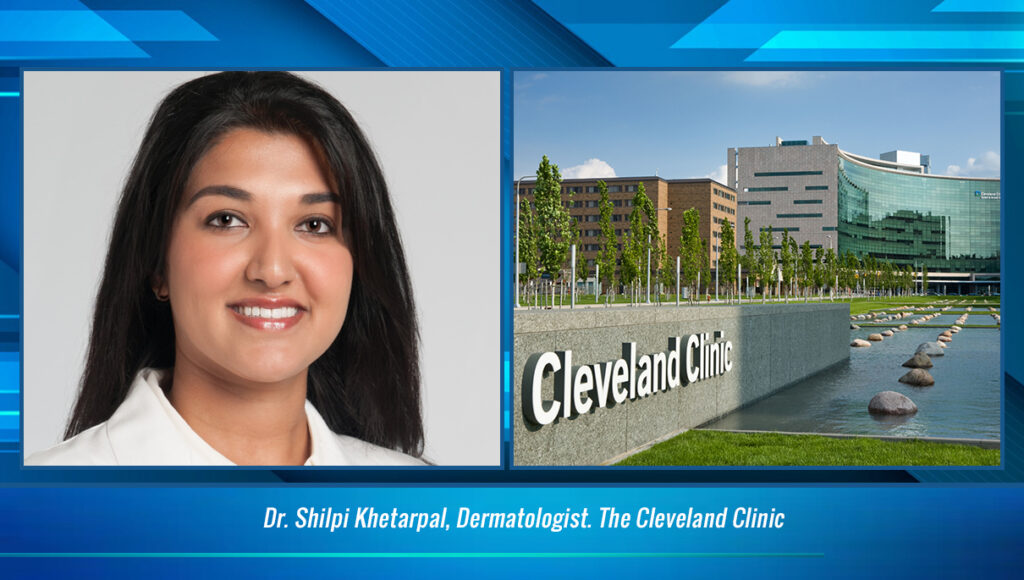With over 30 dermatologists treating about 150 patients a week, the Cleveland Clinic is one of the major centers for hair loss treatment in the country.
A board-certified dermatologist on staff at Cleveland Clinic , Dr. Khetarpal has made a life’s work out of the development of new hair loss treatments. Her focus is on the medical aspects of hair loss, as well as the development of minimally invasive procedures.
In the last ten years, Dr. Khetarpal has witnessed increased effectiveness in hair loss treatment, resulting in happier patients.
Who does Dr. Khetarpal and The Cleveland Clinic Treat for Hair Loss?
Khetarpal treats a wide spectrum of people who come to her with different kinds of hair loss. About 90% of these patients are women. She puts this down to the cultural perception that hair loss in men is socially acceptable.
“In our society, it’s really acceptable for men when they start to thin or bald to just cut their hair really short or shave it,” Khetarpal points out. “For women, it’s really perceived that women should have this long, luscious, flowing hair. So women are definitely more bothered by it.”
Interestingly, the statistics show that hair loss in men is far more common than hair loss in women. In every decade of life, men experience hair loss at higher rates. A man in his 50s has a significantly greater likelihood of experiencing hair loss than a man in his 20s. But women, in contrast, do not typically begin to experience hair loss until menopause, with more than half of them not encountering this problem until after the age of 60. What these statistics tell us, according to Khetarpal, is that women feel a lot more pressure from society.
Do the causes of hair loss differ between men and women?
The causes for hair loss also differ between men and women. Men are more likely to suffer from male pattern baldness which they inherited from their own fathers and grandfathers. For women, inherited hair loss (also known as androgenetic alopecia or female pattern baldness) is also the more common reason. Second to that is hair shedding as a response to stress, triggered by traumatic events such as childbirth, weight loss or infection. In all of these cases, hair can often be restored.
So what is the most effective hair loss treatment?
Dr. Khetarpal believes in combination therapies. The best treatments combine medical practice with supplemental care at home. The advantage of laser hair regrowth is that it’s safe for women who can’t take medications due to pregnancy or illness. It’s also much safer than medication, with no side effects. Patients feel empowered and motivated when they can take some control over their hair loss treatment. It can also be used by multiple people in the same household.
Another benefit of hair growth laser treatment? Patients can start it at any time and see a difference, even before they begin treating their hair loss medically.
Why does Dr. Khetarpal and The Cleveland Clinic recommend Theradome over other devices?
Khetarpal recommends the Theradome over other hair growth laser devices. Unlike earlier models, the Theradome covers the entire scalp. It has the highest power and is less dependent on user operation. All users have to do is press a button to be walked through the process.
Because there is a lag in the hair loss and growth cycle, Khetarpal recommends beginning laser hair regrowth as early as possible and maintaining a routine of using it several times a week. Over time, patients will quickly see results in the form of less hair shedding and the growth of new hair.
Dr. Khetarpal recalls a number of personal stories of those whose lives have been improved by hair loss treatment, including a man in his 20s whose life completely turned around after using the Theradome in combination with medical treatment. Another memorable patient was a woman in her 60s who was able to regrow her hair after losing it to chemotherapy.
These stories just go to show that hair loss treatment, especially when started early, is not just about physical health, but overall emotional health, as well.




